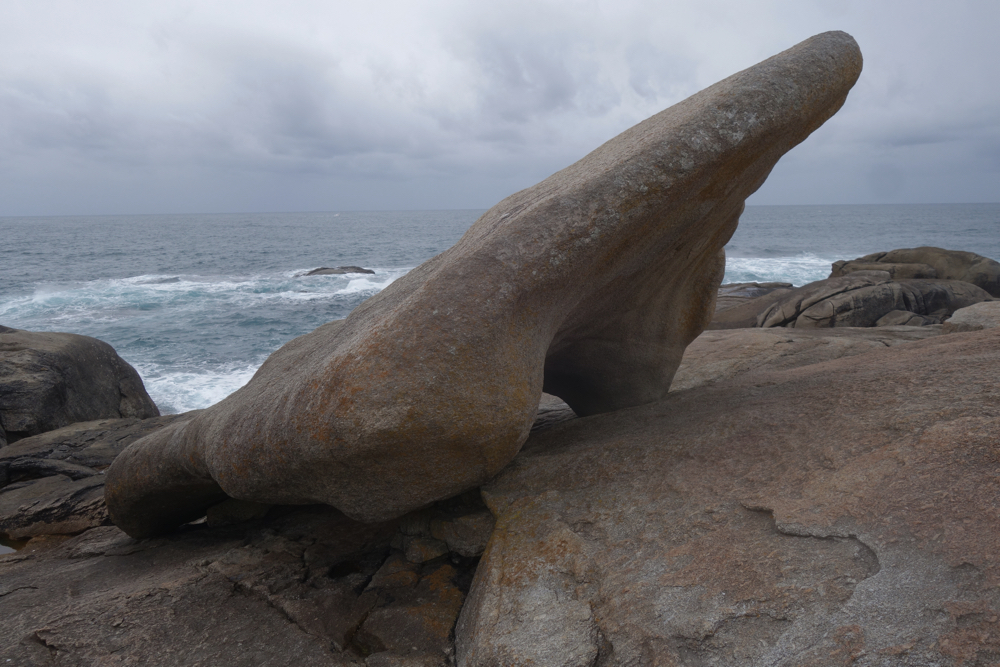For three days now we’ve been walking along the Costa Da Morte, the Coast of Death. We are in Muxía, the end of the unofficial extension of the Camino de Santiago. The locals speak another language here but Spanish gets the job done. Once settled in a hotel we walked out to “Santuario da Virxe da Barca,” a version of the Virgin for fishermen. It was originally a pre-Christian Celtic shrine and sacred spot. If it is possible for a rock to be famous the one above is. The Celtic stones near the church are now said to be remains of the Virgin Mary’s stone boat.
This part of Spain was resistant to conversion to Christianity. It was the pilgrims flocking to Santiago that finally won most of them them over. It is called the Costa da Morte because there have been so many shipwrecks along its treacherous rocky shore. The people of the area still preserve pre-Christian ritual places and pass on the traditional beliefs. Giant pedras de abalar or “oscillating stones” are still sacred locations. There is a local legend that the wind creates wild nightmares.
It is a fitting endpoint to a long walk.
1 Comment

Always been fascinated by the fact that Ireland, the most pagan-like of christian countries, is also one of the oldest. Patrick came in the 5th century, with him the monasteries, and 1500 years later the West coast is still filled with spirits and holy wells, stones, and ‘superstitions’, a pantheon of old saints, charms, and powerful beings. Only now, in the great globalization, is this being lost.